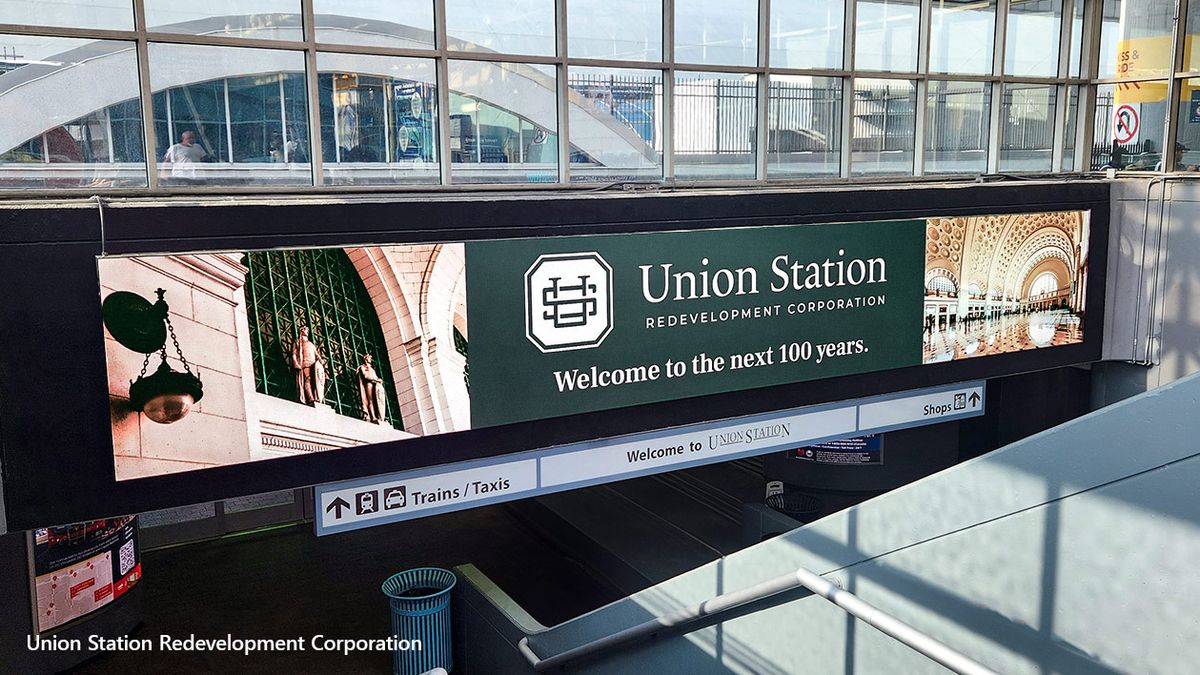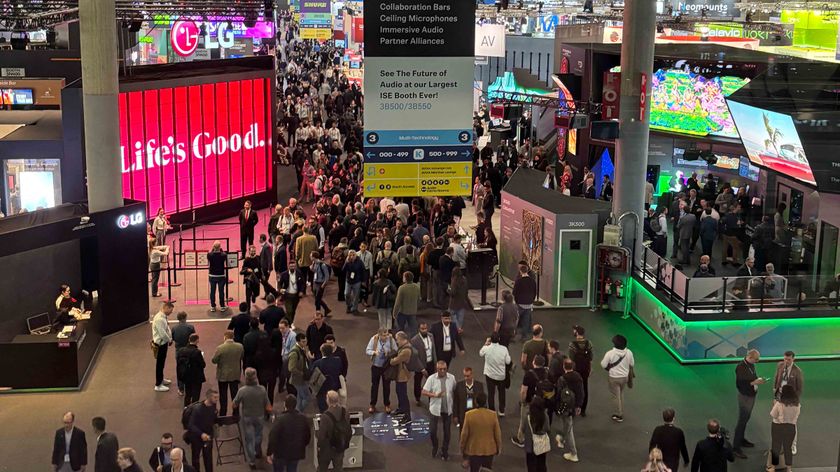SNA Displays provided a video display upgrade to the parking garage and bus terminal entrance at Washington, D.C.’s Union Station, a multi-modal transportation hub that sees 30 to 40 million visitors a year. The new LED video technology replaced outdated digital signage and was installed as part of Union Station Redevelopment Corporation’s (USRC) near-term modernization efforts to improve the commuter and customer experience.
USRC selected a 33-foot-long LED screen from SNA Displays to greet commuters at the entrance between the station’s bus terminal and the train concourse that houses Amtrak and the commuter rail lines MARC and VRE. The display is wall-mounted just below ground level and viewable to visitors transitioning down escalators into the station from street level.
Measuring approximately 5x33 feet (384x2,560 pixels), the new 3.9mm EMPIRE Exterior video screen is used to welcome visitors, advertise local events, and deliver timely, relevant information to busy commuters on the go. In addition to manufacturing and installing the new LED screen, SNA Displays provided demolition for the old technology.
“Digital signage is an important part of the overall modernization efforts and customer experience at Union Station,” said Pete Simon, SNA Displays’ sales director for out of home. “The location of this display in particular was a critical update as it is the main messaging center for intermodal commuters who rely on the information it delivers to get where they’re going on time. Furthermore, revenue-generating advertising platforms like this are key to ensuring the station remains economically viable and able to meet current and operational needs.”
Simon said the reason for using outdoor LED display technology at the mostly-enclosed Union Station entrance has to do with the environment.
“Bus and train centers are always covered but still open-air because the building envelope is not closed off. Exhaust must escape somewhere,” he said. “All too often, interior products are incorrectly deployed in situations like this because they are cheaper, but the humidity in the air will eventually degrade the electronics. Just because the display doesn’t receive rainfall does not mean that it is a conditioned space with regulated humidity.”




